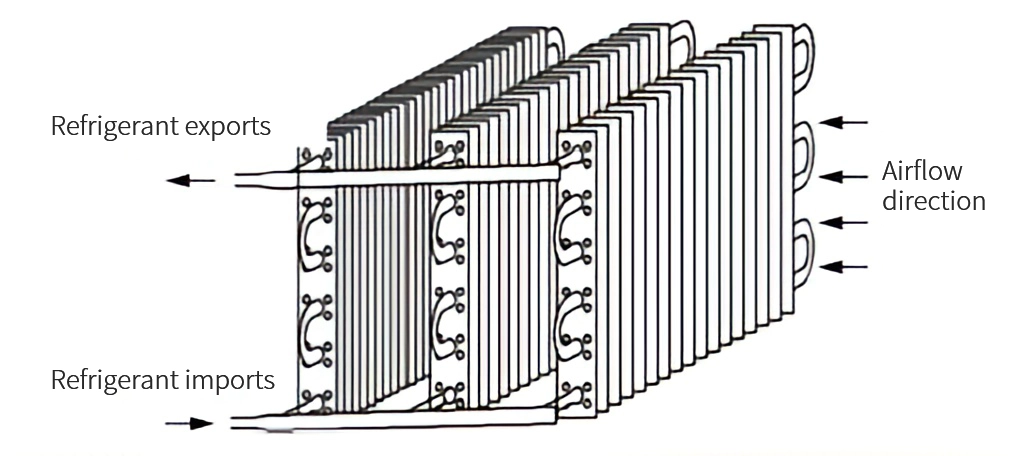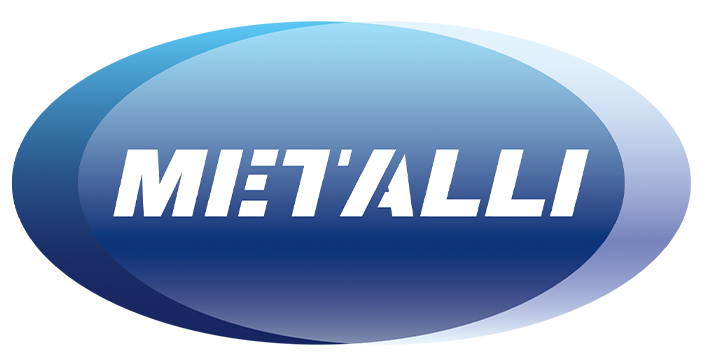Project Case
How Tube-Fin Heat Exchangers Revolutionize Industrial Chillers for Superior Cooling Solutions
In the fast-paced world of industrial operations, maintaining optimal temperature control is crucial to ensure the quality, safety, and efficiency of various processes. Industrial chillers, used in a wide range of applications from food processing to chemical manufacturing, are essential for keeping equipment and environments cool, preventing overheating, and improving operational efficiency. Among the many components that contribute to the performance of industrial chillers, tube-fin heat exchangers stand out as a transformative solution for achieving superior cooling efficiency.
In this article, we will explore how tube-fin heat exchangers have revolutionized industrial chillers, enhancing their performance, energy efficiency, and reliability. We'll also delve into the key advantages of using tube-fin technology in industrial applications and how these heat exchangers provide long-term benefits in terms of cost savings, operational efficiency, and system durability.

What Are Tube-Fin Heat Exchangers?
To understand the role of tube-fin heat exchangers in industrial chillers, it’s important to first define what they are and how they work. A tube-fin heat exchanger consists of tubes that carry the refrigerant or coolant fluid through the exchanger, while fins are placed around the tubes to increase the surface area for heat transfer. These fins help facilitate the efficient exchange of heat between the fluid inside the tubes and the surrounding environment, such as air or water.
The key design feature of tube-fin heat exchangers is their increased surface area, which allows for more effective heat dissipation. As fluid flows through the tubes, heat is transferred to the fins, which in turn dissipate the heat to the surrounding medium. This design allows for a high heat transfer coefficient and improved cooling efficiency.
Key Benefits of Tube-Fin Heat Exchangers in Industrial Chillers
1. Enhanced Heat Transfer Efficiency
One of the most significant advantages of using tube-fin heat exchangers in industrial chillers is the enhanced heat transfer efficiency they provide. Efficient heat transfer is critical for the performance of any cooling system, and tube-fin exchangers excel in this area due to their unique design.
The combination of tubes and fins significantly increases the surface area over which heat can be transferred. As a result, tube-fin heat exchangers can transfer more heat in less time compared to other types of heat exchangers. This ability to efficiently dissipate heat ensures that the chiller operates at optimal performance, maintaining the required temperature while minimizing the energy consumed in the process.
In industrial chillers, where large volumes of heat need to be removed from the system, tube-fin heat exchangers are highly effective in achieving superior cooling results. This is especially true in industries that require high cooling capacities, such as chemical processing, food and beverage production, and petrochemical industries.
2. Energy Efficiency and Reduced Operational Costs
Energy efficiency is a primary concern for industrial operations, as cooling systems are among the largest consumers of energy in many facilities. Tube-fin heat exchangers contribute to energy savings by maximizing the efficiency of heat exchange and reducing the need for excessive cooling power.
By optimizing heat dissipation, tube-fin heat exchangers allow industrial chillers to operate with less energy input while achieving the same or better cooling performance. This energy efficiency leads to reduced electricity costs over time, making industrial chillers with tube-fin heat exchangers more economical to operate.
Furthermore, as industries continue to focus on sustainability and reducing their carbon footprint, tube-fin heat exchangers offer an eco-friendly solution by lowering energy consumption. This not only benefits the bottom line but also aligns with environmental goals by decreasing greenhouse gas emissions associated with energy use.

3. Optimized Airflow for Effective Heat Dissipation
A key characteristic of tube-fin heat exchangers is their ability to optimize airflow across the heat transfer surface. The fin structure is carefully engineered to enhance turbulence in the airstream, which improves the efficiency of heat transfer. This optimized airflow facilitates better dissipation of heat from the refrigerant, ensuring that the system operates at the desired cooling temperatures.
In industrial settings, where equipment may operate in hot and fluctuating ambient conditions, efficient heat dissipation is crucial to prevent system overheating and performance degradation. Tube-fin heat exchangers help prevent these issues by maintaining effective heat rejection, reducing the burden on compressors and other key components of the chiller. This ability to dissipate heat more efficiently allows for smoother operations, particularly in industries such as chemical processing, food and beverage production, and data centers, where temperature stability is critical.
4. Customization for Specific Applications
One of the key advantages of tube-fin heat exchangers is their customizability. Each industrial application has unique cooling requirements, whether it’s a specific refrigerant type, cooling load, or environmental conditions. Tube-fin heat exchangers can be tailored to meet these specific needs, offering a level of flexibility that is not always possible with other types of heat exchangers.
For example, manufacturers like NANJING METALLI INDUSTRIAL CO. specialize in custom tube-fin heat exchangers that can be designed to meet specific operating parameters such as temperature ranges, pressure conditions, and material specifications. The ability to customize the tube-fin design ensures that the heat exchanger will provide optimal performance for the given application.
Custom tube-fin heat exchangers can be designed to handle high pressures or aggressive chemicals, which makes them suitable for challenging environments such as chemical reactors, petrochemical plants, and high-temperature manufacturing processes.
5. Versatile Applications Across Industries
Tube-fin heat exchangers are extremely versatile and can be used in a wide range of industrial applications. Some of the most common industries where tube-fin heat exchangers are utilized include:
- HVAC Systems: In commercial and industrial buildings, tube-fin heat exchangers are used to cool air and maintain desired temperatures in heating, ventilation, and air conditioning (HVAC) systems.
- Food and Beverage: Tube-fin heat exchangers are employed to keep perishable products at low temperatures during storage and transportation.
- Chemical Processing: In chemical plants, tube-fin heat exchangers help regulate the temperature of reactors, coolant fluids, and other components.
- Petrochemical Industry: Tube-fin heat exchangers are used to cool high-temperature fluids in refineries and other petrochemical processing facilities.
The adaptability of tube-fin heat exchangers allows them to provide efficient and reliable cooling solutions across these and many other industries, making them an essential component in modern industrial systems.
Design Features of Tube-Fin Heat Exchangers
To better understand why tube-fin heat exchangers are so effective in industrial chillers, let’s take a closer look at some of the key design features that contribute to their superior performance:

1. Increased Surface Area for Heat Transfer
The fins around the tubes play a crucial role in enhancing heat transfer efficiency by increasing the surface area available for heat exchange. This allows the heat exchanger to dissipate heat more effectively and at a faster rate.
2. Turbulent Airflow for Improved Heat Dissipation
The fin design also creates turbulence in the airflow, which enhances the transfer of heat to the surrounding environment. This turbulent airflow increases the rate at which heat is dissipated, further improving the heat transfer efficiency.
3. Corrosion Resistance
The materials used in tube-fin heat exchangers, such as stainless steel and copper, are chosen for their ability to resist corrosion, especially in environments where exposure to moisture or harsh chemicals is common.
4. Compact Modular Construction
The modular construction of tube-fin heat exchangers allows for easier installation and maintenance. They can be stacked and configured in various ways to meet the specific cooling demands of a system, making them highly adaptable.
Conclusion
Tube-fin heat exchangers have significantly enhanced the performance and efficiency of industrial chillers, providing superior cooling solutions across various industries. Their increased heat transfer efficiency, energy-saving design, compact size, and customizability make them a vital component in modern cooling systems. By incorporating tube-fin heat exchangers, businesses can improve the overall performance, reliability, and lifespan of their industrial chillers, resulting in long-term cost savings and greater operational efficiency.
As industries continue to prioritize more efficient, durable, and eco-friendly cooling solutions, the role of tube-fin heat exchangers will keep expanding. Whether optimizing existing chillers or designing new, high-performance systems, these heat exchangers are playing a key role in shaping the future of industrial cooling technology. For businesses seeking to enhance their cooling systems, NANJING METALLI INDUSTRIAL CO. offers high-quality, custom tube-fin heat exchangers tailored to meet the specific needs of various industrial applications. Investing in these advanced solutions ensures that operations remain efficient, cost-effective, and sustainable for years to come.







